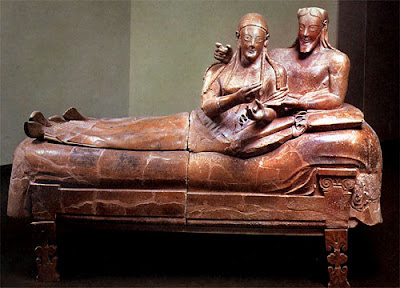 All of the art, literature and architecture we have looked at this semester has been created within a specific religious context. Piss Christ is a 1987 photograph by artist and photographerAndres Serrano. It depicts a small plastic crucifix submerged in urine. Conservative Christian senator's criticism of the piece led to a heated US debate on public arts funding. Republican Jesse Helmes told the senate that Serrano was "not an artist, but a jerk." Serrano was awarded a prize partially funded by the National Endowment for the Arts. Many called for the dissolving of this tax funded agency. Serrano defended his photograph as a criticism of the "billion-dollar Christ- for- profit industry"and a "condemnation of those who abuse the teaching of Christ for their own ignoble ends." The photograph was vandalized in Australia and in Sweden (by neo-Nazis in 2007.) Controversy reached its peak on Palm Sunday this year when it was attacked with hammers after and "anti-blasphemy campaign by French Catholic fundamentalists while on display in an Avignon museum.
All of the art, literature and architecture we have looked at this semester has been created within a specific religious context. Piss Christ is a 1987 photograph by artist and photographerAndres Serrano. It depicts a small plastic crucifix submerged in urine. Conservative Christian senator's criticism of the piece led to a heated US debate on public arts funding. Republican Jesse Helmes told the senate that Serrano was "not an artist, but a jerk." Serrano was awarded a prize partially funded by the National Endowment for the Arts. Many called for the dissolving of this tax funded agency. Serrano defended his photograph as a criticism of the "billion-dollar Christ- for- profit industry"and a "condemnation of those who abuse the teaching of Christ for their own ignoble ends." The photograph was vandalized in Australia and in Sweden (by neo-Nazis in 2007.) Controversy reached its peak on Palm Sunday this year when it was attacked with hammers after and "anti-blasphemy campaign by French Catholic fundamentalists while on display in an Avignon museum.Do you see this work as blasphemous? Has it crossed the line of what should be defended as "free speech?" Do you think it is "art?" If you came upon this work in a gallery and had no information about it, how do you think you might react to it?
Serrano has become a familiar figure in popular media, with interviews in Vogue and appearances on the Colbert Report. He is like a rock star, as are many in the modern art world, and has recently entered into the music scene with plans to release a CD under the alias "Brutus Faustus." At 60, Serrano feels he has accomplished everything he has wanted to accomplish except being a rock star. Does this change your impression of his Piss Christ, or of his defense of it?










